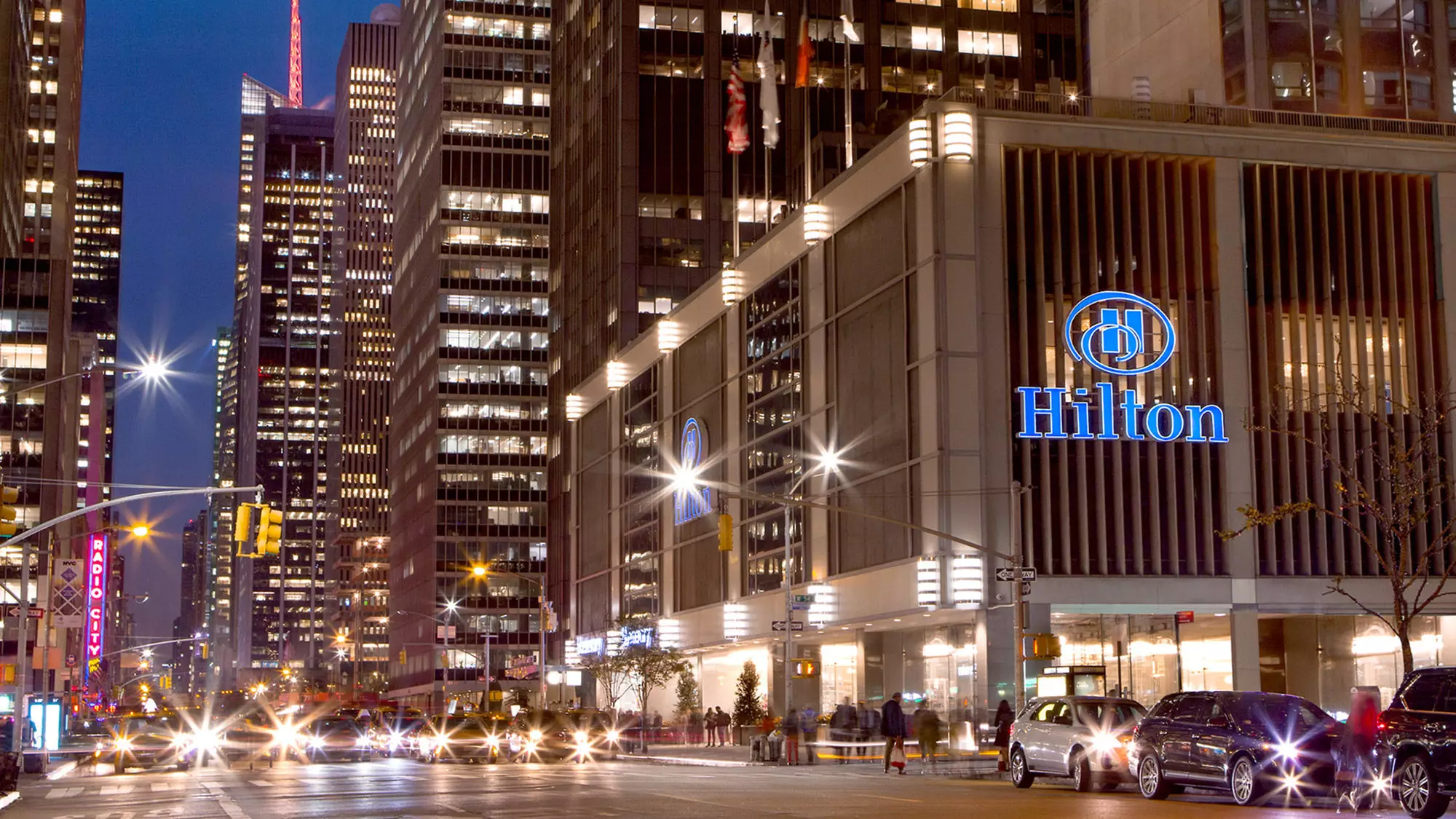In an era marked by tumultuous global events and fluctuating consumer confidence, Hilton CEO Christopher Nassetta’s insights during the company’s Q1 earnings call reveal a captivating narrative of resilience entwined with hesitation. Analysts welcomed his perspective as he articulated a palpable shift in traveler sentiment, noting that many are currently in a “wait-and-see mode.” The modest decline in demand registered in the first quarter can be perceived as a reflection of a broader economic landscape fraught with uncertainties. This sentiment is not merely anecdotal; it resonates across various sectors saying that leisure travel has experienced significant pressure as consumers weigh their options against a backdrop of economic unpredictability.
March’s turbulence has further complicated the forecast for 2025, prompting Hilton to revise its expectations for revenue per available room (RevPAR). Initially buoyed by expectations of a growth rate between 2-3%, Hilton’s outlook has now turned cautious, anticipating either stagnation or a decline of up to 2%. This adjustment is particularly telling, as it underscores a deeper narrative of vulnerability in the hospitality industry and reflects the nuanced shifts in consumer behavior.
Segment Analysis: Growth Drivers and Areas of Concern
Despite the overarching uncertainties, Hilton has continued to witness an upward trend in certain segments. The company’s first-quarter RevPAR growth of 2.5% was largely attributed to strong performance stemming from late 2024, spilling into the early months of this year. However, delineating this growth reveals a more complex picture. The group business sector emerged as a notable performer, marking a 6% year-over-year increase. Contrary to this, the leisure segment is trailing with only a 1% growth, hinting at the need for Hilton to recalibrate its strategies to reinvigorate this crucial market.
Nevertheless, it’s worth noting the shift that executives are monitoring closely: even the high-performing group business has shown signs of deceleration over the past few weeks. This trend is indicative of a cautious corporate environment where organizational budgets for travel may be tightening, and planning ahead becomes an exercise in risk management.
International Travel Dynamics: A Mixed Bag
Nassetta illuminated the mixed results of cross-border travel, specifically highlighting the significant decline in Canadian and Mexican patronage at U.S. properties. A decrease in these key markets was noted at “high single digits,” igniting concerns about the adverse effects on Hilton’s revenue streams. However, he remained optimistic about compensatory factors, pointing to rising traveler numbers from Asian markets, the United Kingdom, and several parts of Europe. The uptick in inbound travel, primarily driven by a fluctuating dollar, reflects the intricate web of global economic relations at play.
Importantly, U.S. travel accounted for only about 4% of Hilton’s overall business, emphasizing that while the loss is felt, it is not catastrophic. The revenue flux seen each month reflects the erratic rhythm of consumer behavior in response to international uncertainties, revealing both vulnerability and adaptability within the company’s framework.
Regional Performance: Deciphering the Variability
Unpacking Hilton’s performance regionally signifies a patchwork of growth patterns. While RevPAR in the U.S. increased by a modest 2.1%, other regions demonstrated considerably stronger momentum, notably the Middle East and Africa with an impressive 8.5% growth. However, the Asia Pacific region’s stagnation, especially a 3.1% dip in China, beckons an evaluation of market-specific strategies. Such disparities in performance underline the importance of localized strategic development; Hilton’s robust global presence can sometimes obscure the intricacies of regional dynamics.
Looking to the future, Nassetta’s steadfast outlook for Q2, predicting relatively flat RevPAR, invites both skepticism and hope. He appears intent on pushing back against a pervasive narrative of doom, instead framing current market conditions as a temporary phase. His insistence on the underlying economic strength that could soon resurface is both a hopeful declaration and a call to broader industry optimism.
Innovative Horizons: Expansion and Brand Strategy
Amidst these fluctuations, Hilton’s strategic vision remains undeterred, with plans to expand its brand portfolio from 24 to at least 27 within the next two years. This forward-looking approach is emblematic of a larger trend in the industry where innovation can serve as a catalyst for recovery. Expected launches include unique lifestyle offerings and a furnished-apartment concept, intended to capture the emergent extended-stay market. This creativity in brand development signals Hilton’s commitment to not only adapt but to lead amidst changing market tides.
With iconic brands like Motto and Canopy already invigorating urban spaces, Hilton’s latest innovations reposition the chain to capture niche markets that blend hospitality with local cultural experiences. These strategic moves could prove essential as consumers increasingly seek distinctive and memorable travel experiences.
The challenges facing Hilton are significant, yet they present opportunities for growth and innovation. The narrative around the macroeconomic conditions suggests a complex interplay between consumer sentiment and corporate strategy, setting the stage for a dynamic evolution in the hospitality landscape.


Leave a Reply